#house of dunkeld
Text
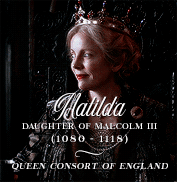





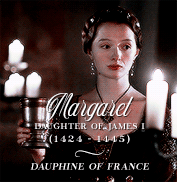
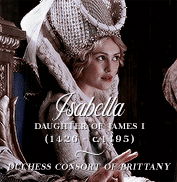



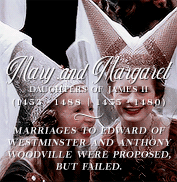






Princesses of Scotland + foreign marriages
#historyedit#perioddramaedit#history#scottish history#british history#kingdom of scotland#house of dunkeld#house of stewart#house of stuart#princesses#ours#gifs
270 notes
·
View notes
Text

On March 20th 1141 King Malcolm IV was born, possibly in Forfar.
Malcolm IV was crowned 27 May 1153 at Scone at age twelve. He was a pious young man and very interested in chivalry and warfare. He also had Anglo-Norman tastes which did not endear him to the Scottish people and he had to face a number of uprisings during his reign. He became known as Malcolm the Maiden partly because of his vow of celibacy.
Malcolm held the earldom of Northumbria and paid homage to King Henry II of England for his lands there. In 1157 he surrendered his northern English counties in return for the earldom of Huntingdon. It was a bad deal for the Scottish king but he desperately wanted to be knighted by Henry II and perhaps feared a war.
In 1159 Malcolm accompanied the English king to France and took part in the siege of Toulouse an act for which he was finally knighted. However upon returning home in 1160 the king had to face a revolt which ended with him subduing Galloway. He then turned his attention to Moray in the north and finally to the King of the Isles, Somerled in the west. It seems many of the Scottish nobles were irritated by his neglect of the kingdom and angered by his deference to the English king.
Malcolm was only twenty-four when he died, apparently of natural causes, in 1165 and he left no heirs. He was buried in Dunfermline Abbey and was succeeded by his brother William.
The pic shows detail from the charter of Malcolm IV, King of Scotland to Kelso Abbey and shows Malcolm sitting to the right of his Grandfather King David I.
11 notes
·
View notes
Text





Queen Mary III - Family Life Update #2
Mary would ascend the throne on May 28th, the day after her 37th birthday following her father’s death. Mary and her family moved from Honey House and into the San Myshuno Palace which had not been occupied in decades. A month later Mary became pregnant with her third and final child, this would push the coronation until after the birth of her future daughter. Mary became the first queen since her grandmother to give birth during her reign. Alexandra and Helena continued their education at Canterbury Academy following their mother’s accession. On February 16th Helena would give birth to Princess Catherine Paulina Marie at the Queen Marina Memorial Hospital. Mary brought Princess Alexandra and Princess Helena with her on the Coronation Tour of Windenburg & San Myshuno the following year, with the royal children capturing the hearts of the media. Catherine stayed behind in San Myshuno and was taken care of by Queen Caroline. The tour was cut short when on November 12th Queen Cecelia tragically passed away in her sleep, surrounded by her two daughters Princess Lorelei and Adelaide, Dowager Empress of Alderaan. Mary and Oliver resumed the tour without their children a month later. Alexandra would go on to graduate Canterbury Academy, being in the top 10% of her class and would go on to attend the prestigious Witham University, studying Political Science. Helena would also graduate four years later and attend St.Mary’s College in Windenburg where she would pursue an Art History degree. Mary and Oliver were seen at many school events for their children, apparently the Queen herself baked lemon bars for Helena’s bake sale at Canterbury Academy. Currently Alexandra has graduated from Witham University and Catherine is still attending Canterbury Academy. Queen Mary was the guest speaker at the graduation ceremony for Witham University the year Alexandra graduated. The family spends most of their time at the San Myshuno Palace, with visits to Statford Castle and Dunkeld Palace during the summer. Currently Alexandra has taken up residence at the Harcourt Palace and uses the Courland Palace as her residence in Coventry.
#royalty#statfordlegacy#sims story#sims4#ts4 royals#ts4 royalty#royal#royals#legacy#sims 4#my sims#simblr#ts4#sims 4 royal family#sims
35 notes
·
View notes
Note
Lol, she has always had a soft spot for the English as far back as Fearless era. Love Story- English regency theme, English actors played love interests in Mine & Style music videos, UK singer ES collaboration, and Wordsworth Windermere lakes district inspiration. Not sure on other eras.
reddit.com/r/TaylorSwift/comments/vk1wx6/miss_americana_taylor_swifts_american_heritage/
A way with words & diplomacy runs in the family bloodlines. One of the descendants came up with historical slogan “No taxation without representation.” Also settled peacefully in Martha’s Vineyard among the native Indians (pre-USA).
Recent deep dive heraldscotland.com/life_style/arts_ents/23623229.taylor-swift-edinburgh-star-real-queen-scotland/
“…the 33-year-old can trace her roots back to Scottish King William the Lion.
The monarch, of the House of Dunkeld, ruled from 1165 to 1214, and while records are patchy - and, let's face it, not the most reliable given most people couldn't read or write - it appears he could be 26th great-grandfather of the pop superstar.
The House of Dunkeld ended in 1290 when Margaret Maid of Norway died aged seven in Orkney.
She was the last legitimate descendent of William the Lion but, as she was never crowned, historians are split on whether she can be considered Queen of Scots.”
Her dna trying to lead her home lol
5 notes
·
View notes
Text
Amphibia Final Battle Playlist!
Since the Series Finale of Amphibia is approaching, I decided to put together a playlist of songs that would be fitting for the Final Battle! I hope some of you Amphibia fans here also Metalheads, because most of the songs on this playlist are of the Metal genre (particularly Power Metal)!
So get Ready to Rock, Amphibia fans, because here is my Final Battle playlist:
1. Paddy and the Rats - Freedom
2. NRG - Instruments of Destruction
3. Gloryhammer - Rise of the Chaos Wizards
4. Powerwolf - Conquistadores (Running Wild Cover)
5. Blind Guardian - Nightfall
6. Black Sabbath - Neon Knights (also the cover by Anthrax)
7. Twisted Sister - Kill or be Killed
8. Iron Maiden - 2 Minutes to Midnight
9. Gloryhammer - The Siege of Dunkeld (In Hoots We Trust)
10. Gloryhammer - Universe on Fire
11. Hammerfall - Hearts on Fire
12. Judas Priest - Painkiller
13. Blind Guardian - Sacred Worlds
14. Hammerfall - Hero's Return
15. Victorius - Dinosaur Warfare
16. Metalite - Peacekeepers
17. Gloryhammer - Hootsforce
18. Nightwish - Last Ride of the Day
19. Iron Maiden - Run to the Hills
20. Triumph - Allied Forces
21. Visions of Atlantis - The Silent Mutiny
22. Rush - Bastille Day
23. Triumph - All the Way
24. Victorius - Victorious DinoGods
25. Queen - Princes of the Universe
26. Edguy - Save Us Now
27. The Aquabats - Awesome Forces!
28. Triumph - Take a Stand
29. Stan Bush - The Touch
30. Queen - Hammer to Fall
31. Black Veil Brides - Rebel Love Song
32. Tenpole Tudor - Swords of a Thousand Men
33. Paddy and the Rats - Join the Riot
34. Stan Bush - Dare
35. The Aquabats - Super Rad!
36. Bonnie Tyler - Holding Out for a Hero
I was gonna include “Locked Within the Crystal Ball” by Blackmore’s Night too, but I think that song fits The Owl House more...
And I know “Holding Out for a Hero” is more of a pop song, but I still consider it Battle Music.
Also, you might find it kind of weird that there are songs about Dinosaurs on this playlist, but think about it: Amphibia is a world, where we’ve seen Birds the size of T-Rexes and and Rhino Beetles the size of Triceratopses!
And yeah, the playlist includes songs from The Aquabats too! Amphibia is a comedic show after all...
So there you have it: my Amphibia Final Battle Playlist!
(Note to self: make this playlist on Spotify...)
5 notes
·
View notes
Text
Scotland Trip Itinerary
Day 1, Aug. 1: Dalgety Bay, walk through Long Park to Town Centre, meal at Louie Brown's
Day 2, Aug. 2: visit to Rosslyn Chapel and brief walk to Rosslyn Castle ruins then to Cramond and back to Dalgety Bay;
Day 3, Aug 3: by bus to Edinburgh for wander, visited the Royal Mile and the John Knox House. Lunch and bevy at Deacon Brodie's before tour of Mary King's Close. Walk to Grayfriar's Bobby and church; back via Princes St. and Rose St. to bus stop on Queensferry Rd;
Day 4, Aug. 4: Cowden Japanese Garden, tour and lunch, then walk to Dollar Glen to view Castle Campbell;
Day 5, Aug. 5: to Paisley to visit Friends. Went to the highlands and a great pub.
Day 6: Toured Glasgow and went to the tenement museum.
Day 7: Ferry from Gourock to Dunoon, visit friends. We had car troubles, but got those fixed then on to Puck's Glen and Jubilee Point, then to Cairndow for overnight stay and dinner at the Cairndow Stage Coach Inn;
Day 8: to Inverary, visit jail; get new spare tyre; on to Kilmartin to see standing stones and Pictish carvings; then on to view Stalker Castle of Monty Python fame and then to Oban; night ar the Muthu Alexandria Hotel, best fish and chips and then drunken evening in The View and in hotel bar;
Day 9: on to Fort William then to Spean Bridge, Dalwhinnie and Blair Atholl where we stayed in the Blair Atholl Arms Hotel, had dinner in the cozy bar and then breakfast in the dining hall next morning;
Day 10: Visited Blair Atholl Castle and gardens then back to Dalgety Bay via Pitlochry (where we lost each other), fish ladder, lunch, walk to The Hermitage at Dunkeld where we went into the Duke of Argyll's folly;
Day 11, Aug 11: Lazy day in preparation for night at The Tattoo. Bus to Edinburgh and side trip to Edinburgh pharmacy before a drink at Deacon Brodie's and then dinner in the castle (haggis and whisky) and The Tattoo.
A quiet morning visit to Dunfermline Abbey and Pittercrief Park (known Ally as the glen) then Ralph's spectacular spaghetti and packing for the journey home
Scotland is a wonderfully magical place. The cities are full of cool things going on, and when you get out of one of the cities, you can find yourself hiking through magical forests choc full of waterfalls and fairy holes. I want to live In a fairy hole
F i r s t P h o t o S e t of S c o t l a n d
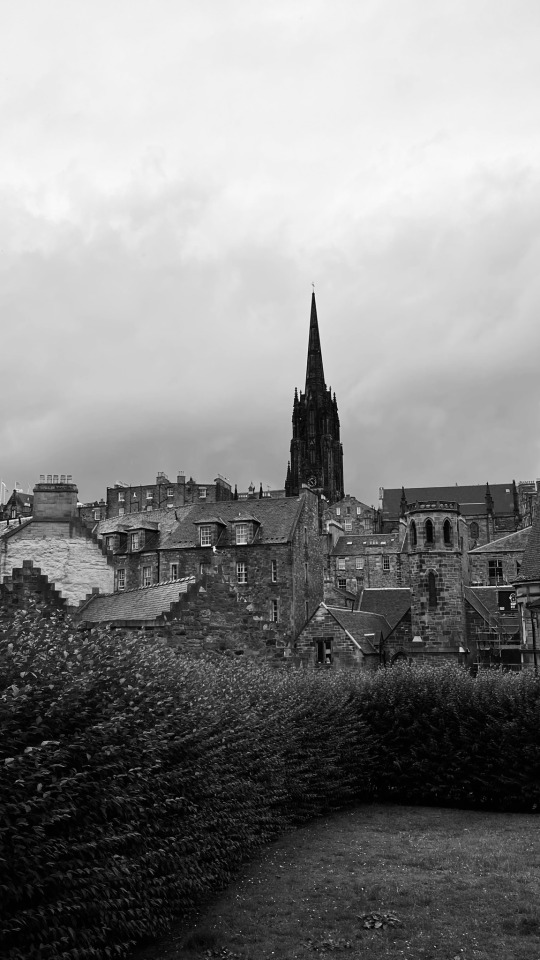



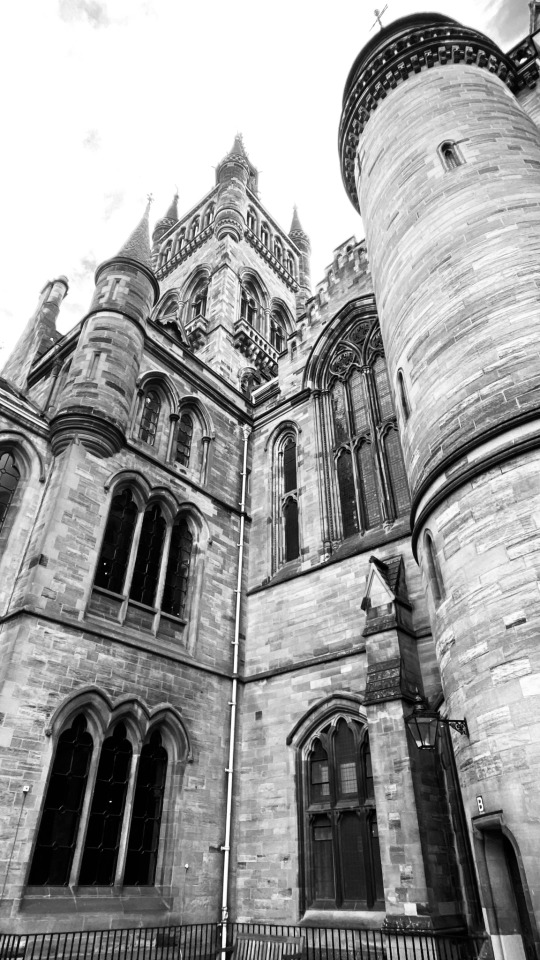

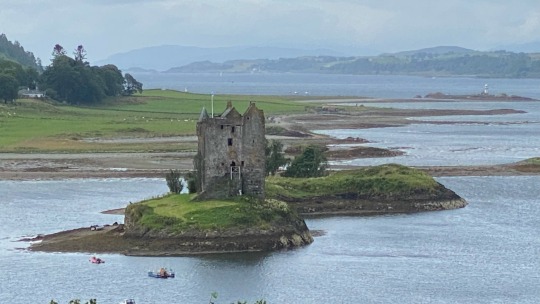


#scotland#edinburgh#fringe#edfringe#glasgow#pubs#lochs#scottish castles#cathedrals#scottish#the highlands#1800s#early 1700s#military tattoo
2 notes
·
View notes
Text
"After spending a week in Cape Town, finding that they overcharged me at the hotel, and having seen everything there was to see, including the botanical gardens, which seem to me likely to confer a great benefit on the country, and the new Houses of Parliament, which I expect will do nothing of the sort, I determined to go back to Natal by the Dunkeld, then lying at the docks waiting for the Edinburgh Castle due in from England."
- King Solomon's Mines (Chapter 1); Haggard
[emphasis added]
#Man is not wrong#Parliament is a circus#ain't no one but clowns there#unfortunately clowns who hold power but clowns nonetheless#Asra talks#king solomon's mines#h rider haggard#asra reads
3 notes
·
View notes
Text
😅😅😅😅😅😅 they stillbe trying to fuck up our stars with new shit... babes ophelia was a forbidden love that's all.. gypsies was always promised to other people... that wasn't his love just coz she has a colleague degree but more like
In 1949, she purchased a house near Dunkeld in Perthshire which she ran as a private hotel for some years, before moving first to a cottage near Crieff and then to Bankfoot. The details of her later life remain obscure.[2] Anderson died at the Royal Infirmary, Perth, on 9 August 1982.[2]
She needed to go
0 notes
Text
Township Urban Area, South Africa
It will house a fi tness and yoga studio, laundromat amenities and safe basement parking. There’ll be a pet-friendly, tree-lined central courtyard, and on the fi fth fl oor, a rooftop terrace with a lap pool, lounge, snack bar and panoramic views of the city, serviced by the Radisson Hotel, for each friends and residents. Phase One of the Sandton Gate improvement has been accomplished, with the second of six phases set to rollout shortly. The rst part consists of m2 of commercial space, m2 of premium-grade of ce space and a 2 500m2 Planet Fitness fitness center positioned on the piazza level of the building. The Green Building Council of South Africa has also earmarked the R3-billion eco-city as a pilot project for one of the rst green-rated precincts in South Africa.
This suggests the development in the direction of smaller, better situated properties will proceed – with compact, upmarket developments on the periphery of robust growth nodes more probably to turn out to be even more well-liked. As extra residents cluster across the periphery of progress nodes, so we're prone to see the return of neighbourhood ‘high streets’ and purchasing centres. The outlook for gas costs is unsure (depends on the Rand and oil prices – both of that are volatile).
It can also be one of many constituent elements of the Vaal Triangle region and was previously located within the Transvaal province. Bedfordview, Bedfordview In upscale Bedfordview, mansions and stylish condo buildings line leafy residential streets, alongside sleek buying malls and restaurants serving European and modern South African cuisine. There are lakefront picnic spots at Gillooly's Farm, a charming park that backs onto the popular residential estates johannesburg Golf Village Gillooly's driving range. The data set forth on this web site is predicated upon data which we consider reliable, however because it has been equipped by third events to our franchisees , we can't characterize that it is accurate or full, and it shouldn't be relied upon as such.
Randburg, which has a protracted historical past, reaching back to the mid-nineteenth century, is made up of quite a lot of architectural types, starting from restored historic structures to new contemporary dwellings. This vast neighbourhood is conveniently positioned close to the most important commercial areas of Sandton, Bryanston, and Fourways, making it a perfect commute for working professionals looking for homes or flats to buy or rent. Found simply North of Rosebank, between the equally popular areas of Melrose and Hyde Park is the charming little suburb of Dunkeld. Reminiscent of older Johannesburg, this residential hamlet boasts broad serene streets, lined with shady timber and enormous houses with established gardens. Easily accessible through Jan Smuts Avenue, which connects Dunkeld to the centre of Johannesburg and its commercial hub, you will discover the Dunkeld West Centre.
Open plan kitchen and lounge area Lovely trendy bathroom 2X bedrooms with inbuilt... Great night life, smaller properties, great various vibe, plenty of journalists, students, and young families, incredible local restaurants and new retailers opening up on a daily basis. Parkhurst has a extra European really residential estates johannesburg feel to it, with an excellent strip of restaurants, and domestically owned outlets and antique sellers alongside 4th Avenue. You typically see individuals walking their canines, parents with their pushchairs, youngsters on their bikes, joggers all out and about - significantly at weekends.
Through its partnership with Crystal Lagoons, Champions Group seeks to set up a brand new real estate portfolio, with projects designed for the high-income phase that involve paying a membership charge, something akin to a traditional nation club. Growthpoint, South Africa’s largest listed property company, said in its outcomes residential estates johannesburg for the yr to June 30 that tenants are spoilt for choice and negotiations are robust. The group identified an oversupply of house across all property sectors in South Africa, adding that the macro-economic environment is “weighing heavily” on the group’s capability to increase dividends in 2020.
The acquisitions take place via the registration of long-term leases and servitudes, as well as the conclusion of assorted improvement and property associated agreements. This project began in 2018 and is on-going, with 80-plus sites recognized in South Africa and 19 websites in Botswana, to date. The worth of the transactions vary, relying on the commercial preparations negotiated with the landowners, with ZAR 2.5 million on common paid to every landowner for the registration of the servitude. We are the only staff of legal professionals representing Total in its property related matters across the region, confirming our status as trusted legal and strategic counsel in connection with clients’ on-going actual estate initiatives in South Africa and throughout the area. Arabella Estate is located on the Bot River Lagoon, close to Hermanus, Capetown. Standing on 113 hectares of land and a top-notch golf course, Arabella estate is among the most stunning estates in South Africa.
A previous ruling by the KwaZulu Natal High Court concluded that roads within non-public estates fall inside the definition of “public roads” in accordance with the National Road Traffic Act . This cozy house is in a safe estate with beautiful finishes 1 bed room with in-built... “These suburbs provide an excellent location for those working in the north of Johannesburg, while proximity to the Fourways Precinct will continue to heighten property values in the area,” say the brokers. According to Lightstone, the median price for a Freehold Property in Hyde Park this yr is R10.5 million.
Most actual estate companies register a few of their greatest gross sales from properties within the Western Cape. Though property growth isn't exhibiting signs of slowing down, builders are struggling to increase occupancy rates as a result of oversupply. Major players within the residential real estate sector are Pam Golding Properties, RE/MAX of Southern Africa, Seeff Property Services, and Harcourts Real Estate, as nicely as RDC Properties, WBHO, and Renprop. Val de Vie, South Africa’s top residential estate, has seen record gross sales over the previous 12 months, with resale transactions in extra of R885-million. This is a 61% increase from the earlier yr when property resales of R549-million have been concluded.
0 notes
Text
Scotland's Monarchy
House of Alpin (848–1034)
House of Dunkeld (1034–1286)
House of Sverre (1286–1290)
First Interregnum (1290–1292)
Monarchy of Scotland restored
House of Balliol (1292–1296)
Second Interregnum (1296–1306)
Monarchy of Scotland restored (second time)
House of Bruce (1306–1371)
House of Balliol (1332–1356)
House of Stewart/Stuart (1371–1651)
Third Interregnum (1651–1660)
Monarchy of Scotland restored (third time)
House of Stuart restored (1660–1707)
With the Scottish Restoration, the Stuarts became Kings of Scotland once more but Scotland's rights were not respected. During the reign of Charles II, the Scottish Parliament was dissolved and James was appointed Governor of Scotland. James II himself became James VII in 1685. His Catholicism was not tolerated, and he was driven out of England after three years. In his place came his daughter Mary and her husband William of Orange, the ruler of the Dutch Republic. The two were accepted as monarchs of Scotland after a period of deliberation by the Scottish Parliament and ruled together as William II and Mary II.
An attempt to establish a Scottish colonial empire through the Darien Scheme, in rivalry to that of England, failed, leaving the Scottish nobles who financed the venture for their profit bankrupt. This coincided with the accession of Queen Anne, daughter of James VII. Anne had multiple children but none of these survived her, leaving as her heir her half-brother, James, then living in exile in France. The English favored the Protestant Sophia of Hanover (a granddaughter of James VI) as heir. Many Scots preferred Prince James, who as a Stuart was a Scot by ancestry, and threatened to break the Union of Crowns between England and Scotland by choosing him for themselves. To preserve the union, the English elaborated a plan whereby the two Kingdoms of Scotland and England would merge into a single Kingdom, the Kingdom of Great Britain, ruled by a common monarch, and with a single Parliament. Both national parliaments agreed to this (the Scots albeit reluctantly, motivated primarily by the national finances), and some subterfuge as a total majority of signatories were needed to ratify the Scottish parliament's assent, bribes, and payments. Thereafter, although monarchs continued to rule over the nation of Scotland, they did so first as monarchs of Great Britain, and from 1801 of the United Kingdom.
King James VI was the last true king of scotland.

#scottish history#kings of scotland#Scotlands Monarchy#Queens of scotland#Royals#Monarchy#british monarchy
0 notes
Photo

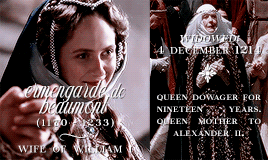



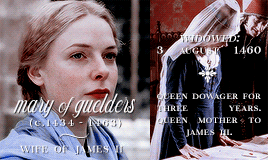

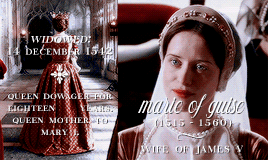
♕ Queens Dowager of Scotland (1093-1560)
#historyedit#royaltyedit#history#house of dunkeld#house of stewart#scottish history#kingdom of scotland#qc: margaret of wessex#qc: ermengarde de beaumont#qc: marie of coucy#qc: yolande de dreux#qc: joan beaufort#qc: mary of guelders#qc: margaret tudor#qc: marie of guise#perioddramaedit#ours
170 notes
·
View notes
Text

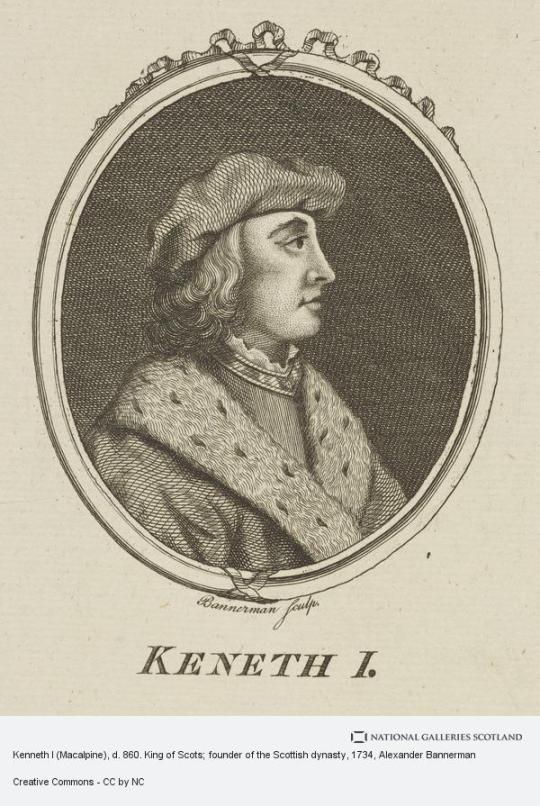
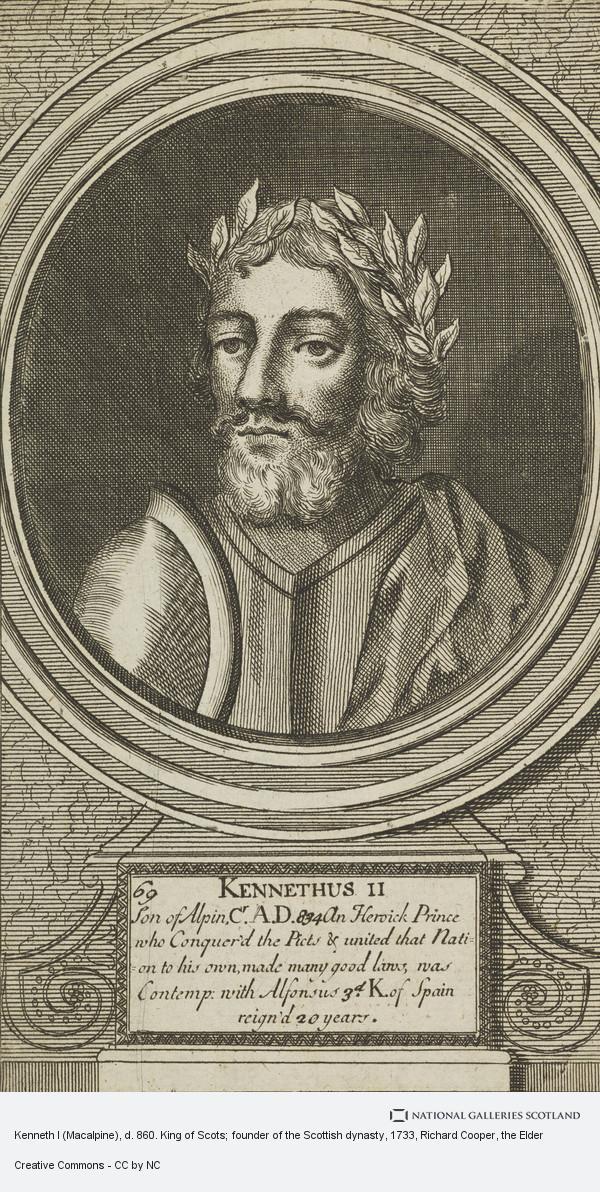
13th February 862 Kenneth MacAlpin (Cináed mac Ailpin); who united the Picts and Scots in one kingdom, died at Forteviot. His reign is given in the Pictish Chronicle as twenty eight years.
Kenneth, the son of Alpin went by a few names, Cináed mac Ailpín, Kenneth Mac Alpin, and Kenneth the Hardy, many regard him as the first King of Scotland.
Battling against Norse (Viking) raids, he brought some unification between the Gaels and the Picts to found a united kingdom of Alba or Scotia. The Picts had been weakened by incursions from the Vikings and Irish tribes who under Fergus Mor had settled in the area of Argyll. The term Scots came from the Latin Scotti which was Latin for Irish.
Kenneth was Dalriada son of King Alpin II of Dalriada and succeeded his father to the crown of Dalriada in 839 but he also had a claim to be King of the Picts through his mother, he was however not the only claimant to the Pictish throne.
The Picts agreed to a meeting with Mac Alpin at Scone, attended by all claimants to the Pictish Crown, Now this story is a bit far fetched but it is a story none the less of what is said to have happened at that meeting, it has since been referred to as Mac Alpin’s treason.
The leading Pict Claimant, Drust X and his nobles were all killed by the Scots: allegedly (and improbably) by having their booby-trapped benches collapsed so Kenneth’s rivals plunged into pits in the floor and impaled themselves on spikes set there for the purpose.
Suddenly there was only one claimant for the Pictish Crown, and Kenneth was crowned King of the Picts and the Scots in 843. He was the first King of the House of Alpin, the dynasty named after his father. Kenneth made his capital at Forteviot, a small village 5 miles south west of today’s Perth. He also moved the religious focus of his kingdom from Iona, where he was said to have been born, to Dunkeld, and had St Columba’s remains moved there in 849, perhaps for safe keeping from the continuing Vikings raids.
Kenneth MacAlpin was succeeded by Donald MacAlpin/ Domnall mac Ailpín his brother.
15 notes
·
View notes
Note
what's one (non-spoiler) piece of lore from your story that you haven't shared yet?
OOOh this is a super interesting question!! I think that something I haven't shared yet which is NOT a spoiler is that Windenburg has been ruled by 8 different dynasties:
House of Winden (985-1204)
House of Henford (1204-1290)
House of Amiens (1290-1412)
House of Bristol (1412-1438)
House of Verdun (1438-1611)
House of Dunkeld (1611-1714)
House of Wittenburg (1714-1885)
House of Statford (1885-present)
I will be going into detail with the last 3 dynasties!
12 notes
·
View notes
Text
[ad_1]
Police have launched a picture of the person suspected to be the Johannesburg northern suburbs arsonist.
Police have recognized a suspect within the Johannesburg Northern suburb arson instances.The suspect is accused of a number of instances of arson, homicide, and housebreaking.His picture comes from footage taken from inside one of many properties he entered.A person referred to as Sentious Novans is being sought by police who, after two years, have give you a reputation and picture of the person believed to be the Johannesburg's Northern suburbs arsonist. Police spokesperson Colonel Dimakatso Sello recognized Novans as a suspect in a number of instances of arson, homicide, and housebreaking and urged the general public to return ahead with any data that can observe him down.He was seen in footage in and round properties that had been cat burgled and, or, set alight.The arsonist is believed to have been focusing on properties in upmarket suburbs since not less than 2020 and has allegedly been chargeable for setting not less than 20 buildings alight.READ | Intercape pleads for help amid extortion fearsHe is believed to work alone and enters upmarket properties within the early hours of the morning, focusing on aged householders.The arsonist spends time within the kitchen, consuming and ingesting and has even been daring sufficient to prepare dinner meals for himself. Once completed he units fireplace to mattresses or blankets utilizing an accelerant.The fires have been began round 04:00 in each case. Sello mentioned Novans served a earlier jail sentence of seven years of which 4 years had been suspended for 5 years.In the start, the arsonist would begin fires in properties when the householders had been away. But of late the arsonist has been setting fires in properties with the house owners current. The arsonist has focused properties in Craighall, Illovo, Hyde Park, Dunkeld, Bryanston, Houghton, and this week a house in Melrose.Fidelity ADT CEO Wahl Bartmann has provided a R100 000 award for data that results in the seize of the suspect.
[ad_2]
Source link
0 notes
Text
Challenge #3 Results
With a total combined score of 127 to 71..........
Congratulations House of Dunkeld, you have won a family alibi and proof that you are innocent of the murder of Dount.
House of Stuart, unfortunately, one of you will be found guilty of the murder of Dount and be the next person asked to leave the dinner party.
Votes are due by 8:00 PM EST tomorrow, stay safe, and good luck.
RESULTS:
JJ: 10
Mooly: 9
Rose: 48
Finn: 4
Jack: 32
Leon: 34
Jac: 4
William: 57
0 notes
Text
2nd January 1264: Marriage and Murder in Mediaeval Menteith
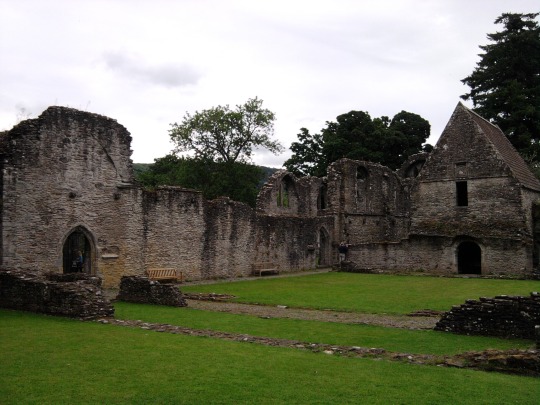
(Priory of Inchmahome, founded on one of the islands of Lake of Menteith in the thirteenth century)
On 2nd January 1264, Pope Urban IV despatched a letter to the bishops of St Andrews and Aberdeen, and the Abbot of Dunfermline, commanding them to enquire into a succession dispute in the earldom of Menteith. Situated in the heart of Scotland, this earldom stretched from the graceful mountains and glens of the Trossachs, to the boggy carseland west of Stirling and the low-lying Vale of Menteith between Callander and Dunblane. The earls and countesses of Menteith were members of the highest rank of the nobility, ruling the area from strongholds such as Doune Castle, Inch Talla, and Kilbryde. Perhaps the best-known relic of the mediaeval earldom is the beautiful, ruined Priory of Inchmahome, which was established on an island in Lake of Menteith by Earl Walter Comyn in 1238. Walter Comyn was a powerful, if controversial, figure during the reigns of Kings Alexander II and Alexander III. He controlled the earldom for several decades after his marriage to its Countess, Isabella of Menteith, but following Walter’s death in 1258 his widow was beset on all sides by powerful enemies. These enemies even went so far as to capture Isabella and accuse her of poisoning her husband. The story of this unfortunate countess offers a rare glimpse into the position of great heiresses in High Mediaeval Scotland, revealing the darker side of thirteenth century politics.
Alexander II and Alexander III are generally remembered as powerful monarchs who oversaw the expansion and consolidation of the Scottish realm. During their reigns, dynastic rivals like the MacWilliams were crushed, regions such as Galloway and the Western Isles formally acknowledged Scottish overlordship, and the Scottish Crown held its own in diplomacy and disputes with neighbouring rulers in Norway and England. Both kings furthered their aims by promoting powerful nobles in strategic areas, but it was also vital to harness the ambition and aggression of these men productively. In the absence of an adult monarch, unchecked magnate rivalry risked destabilising the realm, as in the years between 1249 and 1262, when Alexander III was underage.
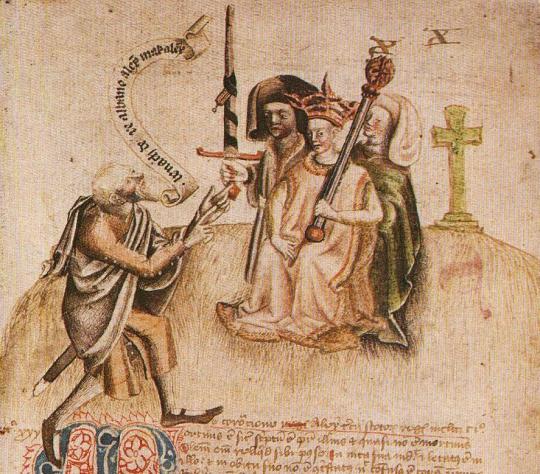
(A fifteenth century depiction of the coronation of Alexander III. Source: Wikimedia Commons)
Walter Comyn offers a typical picture of the ambitious Scottish magnate. Ultimately loyal to the Crown, his family loyalties and personal aims nonetheless made him a divisive figure. A member of the powerful Comyn kindred, he had received the lordship of Badenoch in the Central Highlands by 1229, probably because of his family’s opposition to the MacWilliams. In early 1231, he was granted the hand of a rich heiress, Isabella of Menteith. In the end, there would be no Comyn dynasty in Menteith: Walter and Isabella had a son named Henry, mentioned in a charter c.1250, but he likely predeceased his father. Nevertheless, Walter Comyn carved out a career at the centre of Scottish politics and besides witnessing many royal charters, he acted as the king’s lieutenant in Galloway in 1235 and became embroiled in the scandalous Bisset affair of 1242.
When Alexander II died in 1249, Walter and the other Comyns sought power during the minority of the boy king Alexander III. They were opposed by the similarly ambitious Alan Durward and in time Henry III of England, the attentive father of Alexander III’s wife Margaret, was also dragged into the squabble as both sides solicited his support in order to undermine their opponents. Possession of the young king’s person offered a swift route to power, and, although nobody challenged Alexander III’s right to the throne, some took drastic measures to seize control of government. Walter Comyn and his allies managed this twice, the second time by kidnapping the young king at Kinross in 1257. They were later forced to make concessions to enemies like Durward but, with Henry III increasingly distracted by the deteriorating political situation in England, the Comyns held onto power for the rest of the minority. However Walter only enjoyed his victory for a short while: by the end of 1258, the Earl of Menteith was dead.
Walter Comyn had dominated Scottish politics for a decade, and even if, as Michael Brown suggests, his death gave the political community some breathing space, this also left Menteith without a lord. As a widow, Countess Isabella theoretically gained more personal freedom, but mediaeval realpolitik was not always consistent with legal ideals. In thirteenth century Scotland, the increased wealth of widows made them vulnerable in new ways (not least to abduction) and, although primogeniture and the indivisibility of earldoms were promoted, in reality these ideals were often subordinated to the Crown’s need to reward its supporters. Isabella of Menteith was soon to find that her position had become very precarious.

At first, things went well. Although one source claims that many noblemen sought her hand, Isabella made her own choice, marrying an English knight named John Russell. Sir John’s background is obscure but, despite assertions that he was low born, he had connections at the English court. Isabella and John obtained royal consent for their marriage c.1260, and the happy couple also took crusading vows soon afterwards.
But whatever his wife thought, in the eyes of the Scottish nobility John Russell cut a much less impressive figure than Walter Comyn. The couple had not been married long before a powerful coterie of nobles descended on Menteith like hoodie-crows. Pope Urban’s list of persecutors includes the earls of Buchan, Fife, Mar, and Strathearn, Alan Durward, Hugh of Abernethy, Reginald le Cheyne, Hugh de Berkeley, David de Graham, and many others. But the ringleader was John ‘the Red’ Comyn, the nephew of Isabella of Menteith’s deceased husband Walter, who had already succeeded to the lordship of Badenoch. Even though Menteith belonged to Isabella in her own right, Comyn coveted his late uncle’s title there. Supported by the other lords, he captured and imprisoned the countess and John Russell, and justified this bold assault by claiming that the newlyweds had conspired together to poison Earl Walter. It is unclear what proof, if any, John Comyn supplied to back up his claim, but the couple were unable to disprove it. They were forced to surrender all claims to Isabella’s dowry, as well as many of her own lands and rents. A surviving charter shows that Hugh de Abernethy was granted property around Aberfoyle about 1260, but it seems that the lion’s share of the spoils went to the Red Comyn, who secured for himself and his heirs the promise of the earldom of Menteith itself.
Isabella and her husband were only released when they promised to pass into exile until they could clear their names before seven peers of the realm. John Russell’s brother Robert was delivered to Comyn as security for their full resignation of the earldom. Having ‘incurred heavy losses and expenses’, which certainly stymied their crusading plans, they fled.

In a letter of 1264, Pope Urban IV described the couple as ‘undefended by the authority of the king, while as yet a minor’. However, though Alexander III was technically underage in 1260, he was now nineteen and could not be ignored entirely. Michael Brown suggests that Isabella and her husband may have been seized when the king was visiting England, and that John Comyn’s unsanctioned bid for the earldom of Menteith may explain why Alexander cut short his stay in November 1260 and hastily returned north, leaving his pregnant queen with her parents at Windsor. Certainly, Comyn was forced to relinquish the earldom before 17th April 1261. But instead of restoring Menteith to its exiled countess, Alexander settled the earldom on another rising star: Walter ‘Bailloch’ Stewart, whose wife Mary had a claim to Menteith.
Mary of Menteith is often described as Isabella’s younger sister, although contemporary sources never say so and some historians argue that they were cousins. Either way, Alexander’s decision to uphold her claim was probably as much influenced by her husband’s identity as her alleged birth right. Like Walter Comyn, Walter Bailloch (‘freckled’), belonged to an influential family as the brother of Alexander, Steward of Scotland. From their origins in the royal household, the Stewarts became major regional magnates, assisting royal expansion in the west. The promising son of a powerful family, Walter Bailloch was sheriff of Ayr by 1264 and likely fought in the Battle of Largs in 1263. In 1260 Alexander III had the opportunity to secure Walter’s loyalty as the royal minority drew to a close. Conversely John Comyn of Badenoch found himself out of favour and was removed as justiciar of Galloway following the Menteith incident. The king would not alienate the Comyns permanently, but for now, the stars of Walter Bailloch and Mary of Menteith were in the ascendant.

(Loch Lubnaig, in the Trossachs, another former possession of the earls of Menteith)
Isabella of Menteith and John Russell had not been idle in the meantime. Travelling to John’s home country of England, they probably appealed to Henry III. In September 1261, the English king inspected documents relating to a previous dispute over the earldom of Menteith. On that occasion, two brothers, both named Maurice, had their differences settled before the future Alexander II at Edinburgh in 1213. The elder Maurice, who held the title Earl of Menteith and was presumed illegitimate by later writers (though this is never stated), resigned the earldom, which was regranted to Maurice junior. In return the elder Maurice received some towns and lands to be held for his lifetime only, and the younger Maurice promised to provide for the marriage of his older brother’s daughters.
It is probable that Isabella was the daughter of the younger Maurice, and that she produced these charters as proof of her right to the earldom. Perhaps Mary was her younger sister, but it seems likelier that Isabella would have wanted to prove the younger Maurice’s right if Mary was a descendant of the elder brother, and therefore her cousin. However despite Henry III’s formal recognition of the settlement, he did not provide Isabella with any real assistance: for whatever reason, the English king was either unable or unwilling to press his son-in-law the King of Scots on this matter. Isabella then turned instead to the spiritual leader of western Europe- Pope Urban IV.

(A depiction of the coronation of Henry III of England, though in fact the English king was only a child when he was crowned. Source: Wikimedia Commons)
A long epistle which the pope sent to several Scottish prelates in January 1264 has survived, revealing much about the case. Thus we learn that Urban was initially moved by Isabella and her husband’s predicament, perhaps especially so since they had taken the cross. Accordingly, he had appointed his chaplain Pontius Nicholas to enquire further and discreetly arrange the couple’s restoration. Pontius was to journey to Menteith, ‘if he could safely do so, otherwise to pass personally to parts adjacent to the said kingdom, and to summon those who should be summoned’. But Pontius’ mission only hindered Isabella’s suit. According to Gesta Annalia I, the papal chaplain got no closer to Scotland than York. From there he summoned many Scottish churchmen and nobles to appear before him, and even the King of Scots himself. This merely antagonised Alexander III and his subjects. Although Alexander maintained good relations with England and the papacy throughout his reign, he had a strong sense of his own prerogative and did not appreciate being summoned to answer for his actions, especially not outwith his realm and least of all in York. Special daughter of the papacy or not, Scotland’s clergy and nobility supported their king and refused to compear. Faced with this intransigence, Pontius Nicholas placed the entire kingdom under interdict, at which point Alexander retaliated by writing directly to the chaplain’s boss, demanding Pontius’ dismissal from the case.
Urban IV swiftly backpedalled. In a conciliatory tone he claimed that Pontius was guilty of ‘exceeding the terms of our mandate’ and causing ‘grievous scandal’. To remedy the situation, and avoid endangering souls, the pope discharged his responsibility over the case to the bishops of St Andrews and Aberdeen, and the Abbot of Dunfermline. Thus the pope washed his hands of a troublesome case, the Scottish king’s nose could be put back in joint, and Isabella’s suit was transferred to men with great experience of Scottish affairs, who should have been capable of satisfactorily resolving the matter. However, there is no indication that Isabella was ever compensated for the loss of her inheritance, and when the dispute over Menteith was raised again ten years later, the countess was not even mentioned (probably she had since died). Possibly her suit was discreetly buried after it was transferred to the Scottish clerics, a solution which, however frustrating for the exiled countess, would have been convenient for the great men whose responsibility it was to ensure justice was done.

(Doune Castle- the earliest parts of this famous stronghold probably date to the days of the thirteenth century earls of Menteith, although much of the work visible today dates from the late fourteenth and early fifteenth centuries)
The Comyns could not be dismissed so easily. Never resigned to losing Menteith, John Comyn of Badenoch claimed the earldom again c.1273, on behalf of his son William Comyn of Kirkintilloch. William had since married Isabella Russell, daughter of Isabella of Menteith by her second husband.* The 1273 suit was unsuccessful but William Comyn and Isabella Russell did not lose hope, and in 1282, William asked Edward I of England to intercede for them with the king of Scots. In 1285, with William’s father John Comyn long dead, Alexander III finally offered a compromise. Walter Bailloch, whose wife Mary may have died, was to keep half the earldom and he and his heirs would bear the title earl of Menteith. William Comyn and Isabella Russell received the other half in free barony, and this eventually passed to the offspring of Isabella’s second marriage to Sir Edward Hastings. Perhaps this could be seen as a posthumous victory for Isabella Russell’s late parents, but their descendants would never regain the whole earldom (except, controversially, when the younger Isabella’s two sons were each granted half after Edward I forfeited the current earl for supporting Robert Bruce).
Conversely, Walter Bailloch’s descendants remained at the forefront of Scottish politics. He and his wife Mary accompanied Alexander III’s daughter to Norway in 1281, and Walter was later a signatory to both the Turnberry Band and the Maid of Norway’s marriage negotiations. He also acted as a commissioner for Robert Bruce (grandfather to the future king) during the Great Cause. He had at least three children by Mary of Menteith and their sons took the surname Menteith rather than Stewart. The descendants of the eldest son, Alexander, held the earldom of Menteith until at least 1425. The younger son, John, became infamous as the much-maligned ‘Fause Menteith’ who betrayed William Wallace, although he later rose high in the service of King Robert I. Walter Bailloch himself died c.1294-5, and was buried next to his wife at the Priory of Inchmahome on Lake of Menteith, which Walter Comyn had founded over fifty years previously. The effigies of Walter Bailloch and Mary of Menteith can still be seen in the chapter house of the ruined priory: the worn faces are turned towards each other and each figure stretches out an arm to embrace their spouse in a lasting symbol of marital affection.
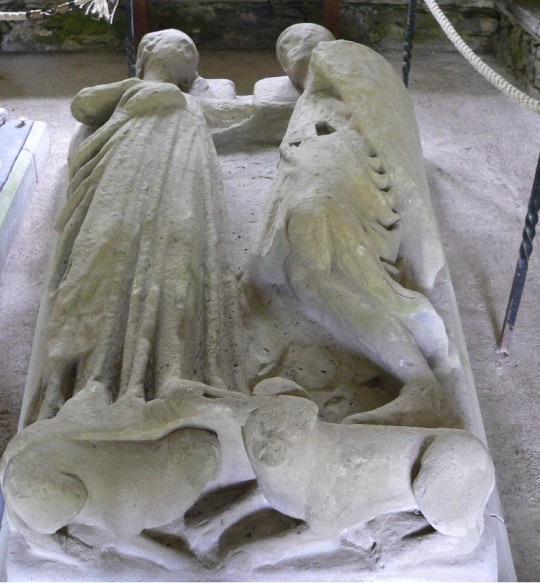
(The effigies of Walter Bailloch and Mary of Menteith at Inchmahome Priory, which was founded by Walter Comyn in 1238 and was perhaps intended as a burial site for himself and his wife Isabella of Menteith. Source: Wikimedia Commons).
The dispute over Menteith saw a prominent noblewoman publicly accused of murder and exiled, and even sparked an international incident when Scotland was placed under interdict. For all this, neither Isabella of Menteith nor John Comyn of Badenoch triumphed in the long term. Even Walter Bailloch eventually had to accept the loss of half the earldom after holding it for over twenty years. In the end the only real winner seems to have been the king. Although at first sight the persecution of Isabella and her husband looks like a classic example of overmighty magnates taking advantage of a breakdown in law and order during a royal minority, Alexander III was not a child and his rebuke of John Comyn did not result in any backlash against the Crown. Most of the Scottish nobility fell back in line once the king came of age, but the king in turn had to ensure that he was able to reward key supporters if he wanted to expand the realm he had inherited. Although it was important to both Alexander III and his father that primogeniture and were accepted by their subjects as the norm, in practice both kings found that they had to bend their own rules to ensure that the system worked to their own advantage. The thirteenth century is often seen an age of legal development and state-building, but these things sometimes came into conflict with each other, and even the most successful kings had to work within a messy system and consider the competing loyalties and customs of their subjects.
Selected Bibliography:
- “Vetera Monumenta Hibernorum et Scotorum”, Augustinus Theiner (a printed version of Urban IV’s original Latin epistle may be found here)
- “John of Fordun’s Chronicle of the Scottish Nation”, vol. 2, ed. W.F. Skene (this is an English translation of the chronicle of John of Fordun, made when Gesta Annalia I was still believed to be his work. It provides an independent thirteenth or fourteenth century Scottish account of the Menteith case
- “The Red Book of Menteith”, volumes 1+2, ed. Sir William Fraser
- “Calendar of Documents Relating to Scotland, Preserved Among the Public Records of England”, volumes 1, 2, 3 & 5, ed. Joseph Bain
- “The Political Role of Walter Comyn, earl of Menteith, during the Minority of Alexander III of Scotland”, A. Young, in the Scottish Historical Review, vol.57 no.164 part 2 (1978).
- “Scotland, England and France After the Loss of Normandy, 1204-1296″, M.A. Pollock
- “The Wars of Scotland, 1214-1371″, Michael Brown
As ever if anyone has a question about a specific detail or source, please let me know! I have a lot of notes for this post, so hopefully I should be able to help!
#Scottish history#Scotland#British history#thirteenth century#women in history#Menteith#earldom of Menteith#Isabella Countess of Menteith#John Russell#John Comyn I of Badenoch#Alexander III#Henry III#Pope Urban IV#Walter Bailloch#the Stewarts#House of Dunkeld#House of Canmore#Mary of Menteith#inchmahome priory
13 notes
·
View notes